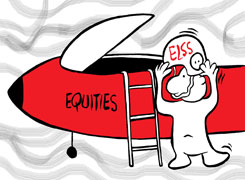Ramalingam Kalirajan |10902 Answers |Ask -Follow
Mutual Funds, Financial Planning Expert - Answered on May 23, 2024
He has an MBA in finance from the University of Madras and is a certified financial planner.
He is the director and chief financial planner at Holistic Investment, a Chennai-based firm that offers financial planning and wealth management advice.... more

dear sir how is DSP nifty 50 equal weight index mutual fund?
Understanding Index Funds
Index funds aim to replicate the performance of a specific index. DSP Nifty 50 Equal Weight Index Fund follows the Nifty 50 Equal Weight Index.
Advantages of Index Funds
Index funds have some benefits, such as low management fees and transparency. They provide a straightforward way to invest in a broad market index.
Disadvantages of Index Funds
However, index funds also have notable disadvantages compared to actively managed funds.
Limited Potential for Outperformance
Index funds track the market. They do not aim to outperform it. Actively managed funds, on the other hand, seek to beat the market through strategic investments.
Lack of Flexibility
Index funds must follow the index, regardless of market conditions. This inflexibility can limit potential gains in changing market scenarios.
Market Downturns
In market downturns, index funds follow the market down. Actively managed funds can potentially minimize losses by adjusting their strategies.
Benefits of Actively Managed Funds
Actively managed funds offer several advantages over index funds.
Expert Management
Professional fund managers actively manage the portfolio. They make strategic decisions to maximize returns and minimize risks.
Flexibility in Investments
Active funds have the flexibility to shift investments based on market conditions. This adaptability can lead to better performance in volatile markets.
Potential for Higher Returns
Through expert analysis and strategic investment decisions, actively managed funds aim to outperform their benchmark indexes.
Disadvantages of Direct Funds
Direct funds, while lower in cost, lack professional guidance. Investing through a regular fund with a Certified Financial Planner (CFP) offers significant benefits.
Expert Advice
CFPs provide tailored advice based on your financial goals and risk tolerance. They help in selecting the right funds and managing your portfolio effectively.
Regular Portfolio Reviews
Investing through regular funds with a CFP ensures periodic reviews and adjustments. This keeps your investments aligned with your financial objectives.
Conclusion
DSP Nifty 50 Equal Weight Index Fund is a straightforward way to invest in the Nifty 50 Equal Weight Index. However, actively managed funds can offer higher potential returns and better risk management. Working with a Certified Financial Planner ensures expert guidance and optimized portfolio management. Consider your financial goals and risk tolerance when choosing between index funds and actively managed funds.
Best Regards,
K. Ramalingam, MBA, CFP,
Chief Financial Planner,
www.holisticinvestment.in
You may like to see similar questions and answers below
Samraat Jadhav |2514 Answers |Ask -Follow
Stock Market Expert - Answered on Jun 07, 2024
Ramalingam Kalirajan |10902 Answers |Ask -Follow
Mutual Funds, Financial Planning Expert - Answered on Sep 10, 2024
Ramalingam Kalirajan |10902 Answers |Ask -Follow
Mutual Funds, Financial Planning Expert - Answered on Sep 22, 2024
Ramalingam Kalirajan |10902 Answers |Ask -Follow
Mutual Funds, Financial Planning Expert - Answered on Oct 15, 2024
Radheshyam Zanwar |6751 Answers |Ask -Follow
MHT-CET, IIT-JEE, NEET-UG Expert - Answered on Dec 19, 2025
Radheshyam Zanwar |6751 Answers |Ask -Follow
MHT-CET, IIT-JEE, NEET-UG Expert - Answered on Dec 19, 2025
Samraat Jadhav |2514 Answers |Ask -Follow
Stock Market Expert - Answered on Dec 18, 2025
Reetika Sharma |432 Answers |Ask -Follow
Financial Planner, MF and Insurance Expert - Answered on Dec 18, 2025
Reetika Sharma |432 Answers |Ask -Follow
Financial Planner, MF and Insurance Expert - Answered on Dec 18, 2025
Reetika Sharma |432 Answers |Ask -Follow
Financial Planner, MF and Insurance Expert - Answered on Dec 18, 2025
Samraat Jadhav |2514 Answers |Ask -Follow
Stock Market Expert - Answered on Dec 18, 2025

Kanchan Rai |648 Answers |Ask -Follow
Relationships Expert, Mind Coach - Answered on Dec 18, 2025
Kanchan Rai |648 Answers |Ask -Follow
Relationships Expert, Mind Coach - Answered on Dec 18, 2025
Anu Krishna |1754 Answers |Ask -Follow
Relationships Expert, Mind Coach - Answered on Dec 18, 2025
























